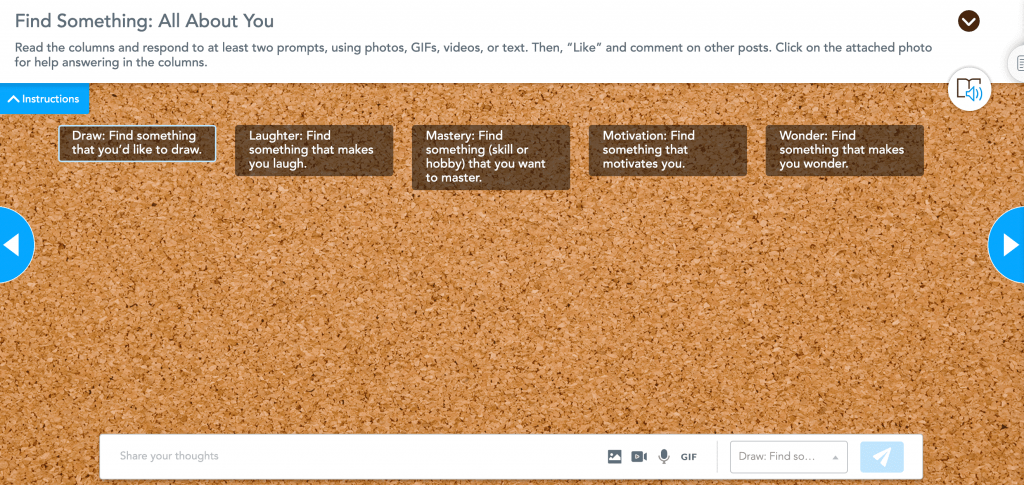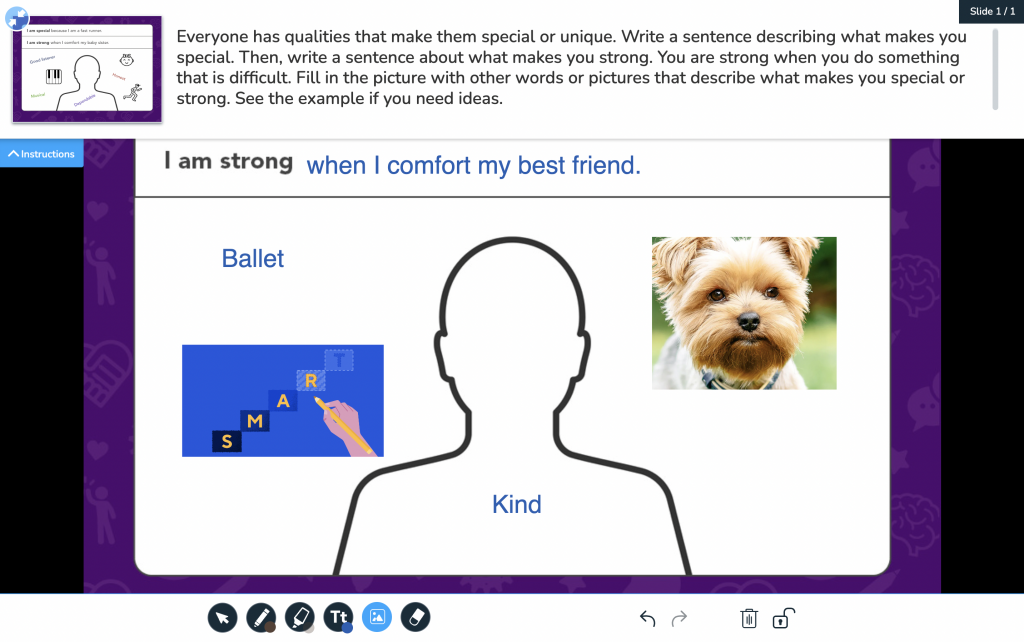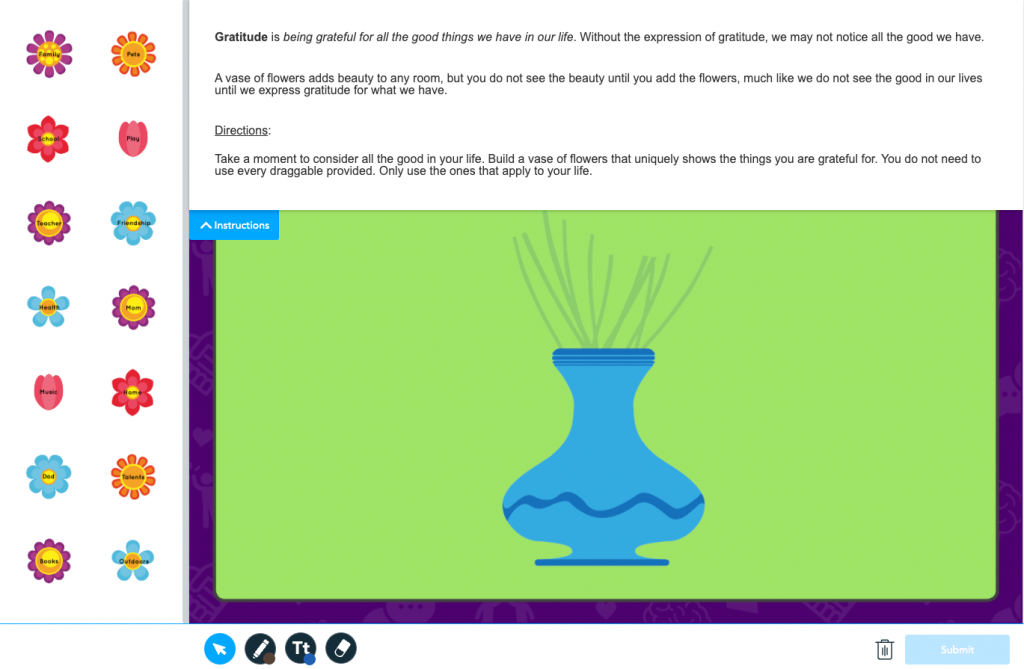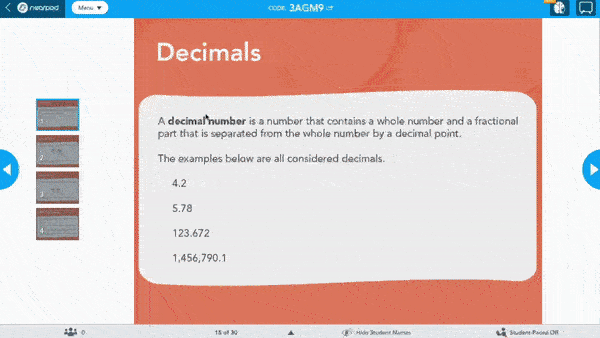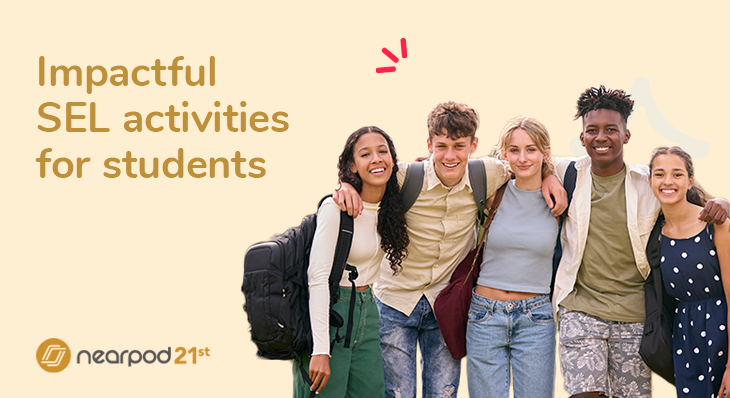
7 Social Emotional Learning (SEL) activities to use in the classroom
What are the benefits of teaching social and emotional learning skills?
Social and emotional learning (SEL) is at the core of learning and development. Research suggests teaching social emotional learning activities to develop life skills significantly improves behavior, attitudes, employment, classroom management, and academic achievement. Consistent SEL practice results in productive habits that positively shape academic performance and students’ mental health. Children’s social development benefits tremendously from these practices, creating a positive impact on their long-term success. From early childhood to middle school to high school, it’s important to make time in the school day to teach students SEL skills such as positive self-talk, active listening, practicing mindfulness, and more.
Foster a love of learning in every student with Nearpod. Teachers can sign up for free below to access activities or social emotional development, and create interactive lessons!
Nearpod’s 21st Century Readiness Curriculum Program
The benefits of SEL development can be applied to any grade and subject, but not every teacher is an SEL expert or has time to become one. Nearpod’s 21st Century Readiness Program includes over 400 SEL lessons, activities, and videos built on CASEL’s five core competencies: self-awareness, self-management, social awareness, relationship skills, and responsible decision-making. The Collaborative for Academic, Social, and Emotional Learning (CASEL) framework guides these resources to help develop knowledge and skills related to one of the CASEL competencies, pushing students to learn, apply, and reflect during the learning experience. This supplemental SEL program includes lifelong learning strategies for goal setting, time management, and growth mindset lessons for persisting, thinking flexibly, and more.
Nearpod’s 21st Century Readiness Program provides an easy way to integrate SEL practices like positive interactions, gratitude, and reflective moments into daily learning to help create safe, inclusive, and effective classroom environments.
Administrators can schedule a call with an expert to explore Nearpod’s 21st Century Readiness Program and unlock the full power of Nearpod for schools and districts.
7 Social Emotional Learning (SEL) activities to use in your classroom
1. Facilitate positive classroom interactions
Collaborate Board activities bring limitless possibilities to instruction. The interactive discussion board facilitates positive interactions among classmates by increasing student engagement, crowdsourcing ideas, and delivering formative feedback. Bringing an interactive discussion board to your Nearpod lessons fosters the development of social emotional learning skills and builds on core competencies such as self-awareness, social awareness, and relationship skills. These are easy SEL activities you can integrate into your daily instruction.
Students truly feel part of the conversation with Collaborate Board, which helps teachers foster classroom culture. A classroom culture of respect, happiness, security, and challenge is foundational to engaging and effective learning. Students need to feel open to honest communication about their progress for improved teaching and learning. As students participate in various SEL activities, such as Collaborate Boards that are focused on fostering open communication, teachers intentionally build effective classroom culture. Students can feel comfortable sharing thoughts and challenges and see hurdles as opportunities to learn.
Check out some of our ready-made Collaborate Board activities developed specifically for building classroom culture:
You can check in on how students are feeling by creating a Nearpod activity. Check-ins drive opportunities to build routines and create a comfortable learning environment. This can help teachers guide a rich dialogue among classmates. Students build an increased capacity to interact with others in a way that shows compassion and understanding.
2. Encourage self-reflection through drawing
Using drawing activities for self-portraits, scribble art, or providing a journaling opportunity for students to express their feelings supports self-reflection for students. Have students practice responsible decision-making, specifically analyzing situations, by completing a Draw It activity on Nearpod to share a challenge they are facing. Reflective Draw It activities help students understand their strengths and areas for growth.
Creating art is a practice of communication and empathy, a growth mindset, and self-reflection. The SEL Through Art series, part of Nearpod’s 21st Century Readiness Program, explores the connection between art and SEL skills. This powerful medium elicits social and emotional learning experiences by helping students explore more about themselves and their life experiences.
3. Create moments of gratitude
Use Nearpod’s Drag & Drop interactive feature in your lessons to engage and connect students with social emotional learning in the classroom. Match feeling words, descriptions, and corresponding facial expressions to talk about resolving conflict and identifying different emotions. Students can discuss the importance of recognizing the good in their lives and expressing gratitude regularly. For instance, Nearpod’s interactive features, such as Collaborate Board, Open-Ended Question, and Poll, are the perfect way to start or end your day with an expression and acknowledgment of gratitude. Use Drag & Drop to create easy SEL activities for your lesson plans, like this one!
4. Collect meaningful student feedback
Creating opportunities for student voice in the classroom is key to building a positive school culture and gathering meaningful student feedback. To increase student talk, provide ample opportunities for engaging interaction through activities like Think-Pair-Share questions and Open-Ended Questions. When using Nearpod’s Open-Ended Question feature, make sure audio recording is enabled to give students multiple ways to engage in student voice. Nearpod’s formative assessment features, like Polls, empower educators to provide multiple ways for students to share valuable information personally. Include a Poll at the beginning or end of your lesson to gather student feedback, collect a formative assessment of emotions, or provide a reflective moment.
Additionally, utilize the Collaborate Board feature for a quick check-in at the beginning of class, asking simple questions to engage student thinking, build background knowledge, or gauge the overall mood of the classroom. Use what you’ve learned from gathering student feedback to help inform future classroom procedures or learning changes.
5. Brain Breaks!
Exclusive to Nearpod’s 21st Century Readiness Program, Brain Breaks videos regulate the energy and focus of your classroom. Research suggests providing a quick break helps refresh the mind and makes it easier for students to focus on important tasks. Our videos help students break the patterns of fatigue, frustration, and lack of focus, and we made it easy for teachers to launch a video at any time throughout the day.
Choose between Calming or Energizing videos depending on the needs of your classroom at any moment. Use calming Brain Breaks as social and emotional learning activities to help students relax, settle their minds, and become refocused on the task.
Use energizing Brain Breaks to provide needed movement and increase the blood flow to the brain. An energizing activity helps reduce stress and anxiety and improves students’ ability to focus.
6. Choose from Nearpod’s premade activities
Choose from over 100 premade SEL activities using Nearpod’s interactive features like Draw It, Time to Climb, and Drag & Drop to incorporate into lessons, or as a bell ringer, an exit ticket, for extra practice, or homework. Nearpod’s social-emotional learning activities are built on the five core competencies: self-awareness, self-management, responsible decision-making, relationship skills, and social awareness. Students use information from their own experiences and values to guide their thinking and learn from others. These are easy SEL activities you can integrate into your daily instruction.
7. Collecting real-time insights
Real-time insight into students’ learning is vital for developing SEL. This immediate feedback allows educators to address emotional and social challenges as they arise, helping students to better manage their emotions. By closely monitoring progress and providing timely support, teachers can foster a nurturing environment where students feel understood and supported.
With Nearpod, real-time insights into student thinking allow teachers to adapt their instruction. Add an Open-Ended Question, Draw It, or Collaborate Board to a lesson on the fly with Quick Launch when you see an opportunity to engage in SEL-integrated instruction intentionally.
These engagement tools ensure students have low-stakes ways to share their thinking. As a result, this simple way to gather real-time insight gives students a voice in the moment while providing you with important feedback. For young people, developing these skills enhances not only academic social and emotional growth but also their ability to form positive relationships with peers and adults.
Teach SEL with Nearpod
Nearpod’s social emotional learning curriculum provides instruction, reflection, and practice opportunities around CASEL-aligned social and emotional learning competencies: self-awareness, self-management, responsible decision-making, relationship skills, and social awareness.
By implementing SEL programs, educators can show students how to manage their emotions effectively through social and emotional skills. For young children, developing these skills enhances their abilities to understand and interact with others. It’s essential that schools prioritize SEL to ensure children learn the necessary competencies for overall well-being and success. If you’re interested in implementing age-specific SEL activities, check out our blog posts on SEL activities for high school and SEL lessons for elementary students for tailored approaches to different age groups.
When SEL curriculum practices are thoughtfully selected and used authentically, they have greater power to be effective. View your role as an educator through the lens of the five core competencies of SEL to enhance your teaching and enrich your classroom environment. Nearpod’s 21st Century Readiness Program easily incorporates SEL in the classroom, helping educators meet students’ social and emotional learning needs.
New to Nearpod? Make sure you’re signed up to access these lessons and activities!
Teachers can sign up for free below to access and create interactive lessons. Administrators can schedule a call with an expert to explore Nearpod’s 21st Century Readiness Program and unlock the full power of Nearpod for schools and districts.
Click here to learn more about Nearpod’s 21st Century Readiness Curriculum Program
References
CASEL.org. Social Emotional Learning competencies. (2022).
Durlak, J. A., Weissberg, R. P., Dymnicki, A. B., Taylor, R. D. & Schellinger, K. B. (2011). The impact of enhancing students’ social and emotional learning: A meta-analysis of school-based universal interventions. Child Development, 82(1): 405–432.
Immordino-Yang, Mary Helen, et al. “Rest Is Not Idleness: Implications of the Brain’s Default Mode for Human Development and Education.” Perspectives on Psychological Science, vol. 7, no. 4, July 2012, pp. 352–64. DOI.org (Crossref), https://doi.org/10.1177/1745691612447308.

Jessica Clarke is the Curriculum Manager at Nearpod.
